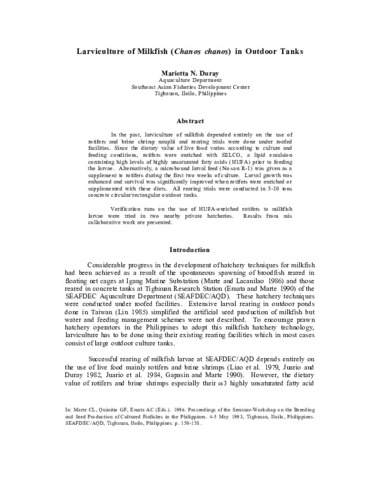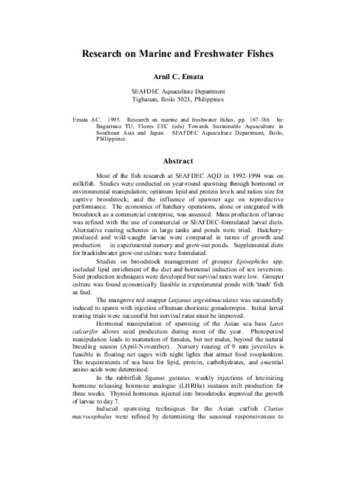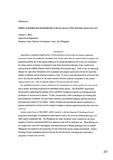Larviculture of milkfish (Chanos chanos) in outdoor tanks
- Global styles
- MLA
- Vancouver
- Elsevier - Harvard
- APA
- Help
Share
抄録
In the past, larviculture of milkfish depended entirely on the use of rotifers and brine shrimp nauplii and rearing trials were done under roofed facilities. Since the dietary value of live food varies according to culture and feeding conditions, rotifers were enriched with SELCO, a lipid emulsion containing high levels of highly unsaturated fatty acids (HUFA) prior to feeding the larvae. Alternatively, a microbound larval feed (Nosan R-1) was given as a supplement to rotifers during the first two weeks of culture. Larval growth was enhanced and survival was significantly improved when rotifers were enriched or supplemented with these diets. All rearing trials were conducted in 5-10 tons concrete circular/rectangular outdoor tanks.
Verification runs on the use of HUFA-enriched rotifers to milkfish larvae were tried in two nearby private hatcheries. Results from mis collaborative work are presented.
Suggested Citation
Duray, M. N. (1996).Larviculture of milkfish (Chanos chanos) in outdoor tanks. In C. L. Marte, G. F. Quinitio, & A. C. Emata (Eds.), Proceedings of the Seminar-Workshop on Breeding and Seed Production of Cultured Finfishes in the Philippines, Tigbauan, Iloilo, Philippines, 4-5 May 1993 (pp. 150-158). Tigbauan, Iloilo, Philippines: Aquaculture Department, Southeast Asian Fisheries Development Center.
Type
Conference paperISBN
9718511326
Related items
Showing items related by title, author, creator and subject.
-
Research on marine and freshwater fishes
Emata, Arnil C. (Aquaculture Department, Southeast Asian Fisheries Development Center, 1995)Most of the fish research at SEAFDEC AQD in 1992-1994 was on milkfish. Studies were conducted on year-round spawning through hormonal or environmental manipulation; optimum lipid and protein levels and ration size for ... -
Studies on breeding and seed production of the new species of fish with high commercial value
Marte, Clarissa L. (Japan International Research Center for Agricultural Sciences, 2001)Aquaculture contributes significantly to food production and provides the means to generate increased revenue for countries in Southeast Asia. As the catch from the capture fisheries stagnate and population growth rate in ... -
The Philippine aquaculture industry
Camacho, Arsenio S.; Macalincag-Lagua, Natividad (Aquaculture Department, Southeast Asian Fisheries Development Center, 1988)The aquaculture sector of the Philippine fishing industry registered the highest growth rate of 12.5% in 1977-1986. The contribution of aquaculture to the total fish production was equivalent to 24% in 1986 compared to ...







